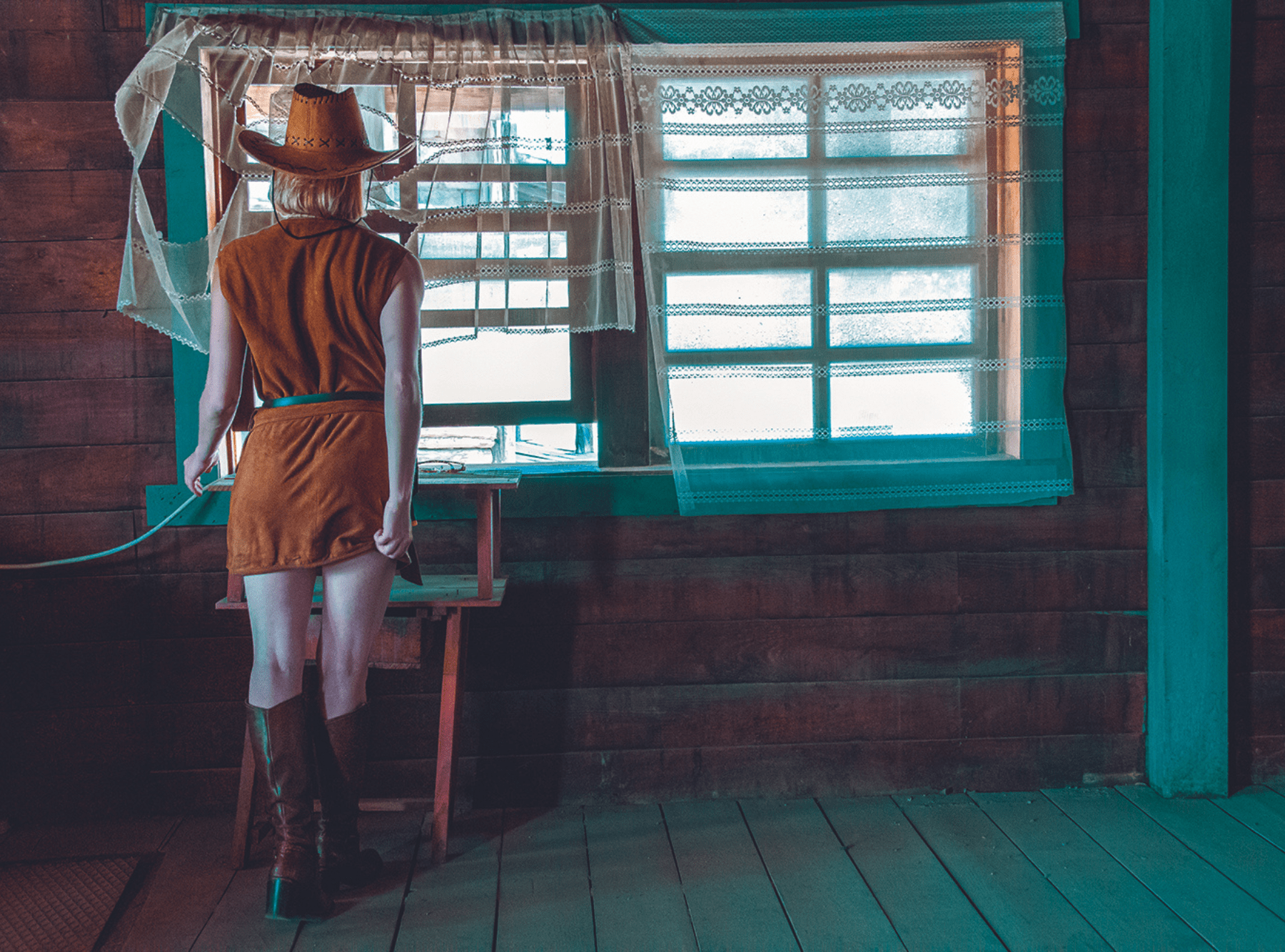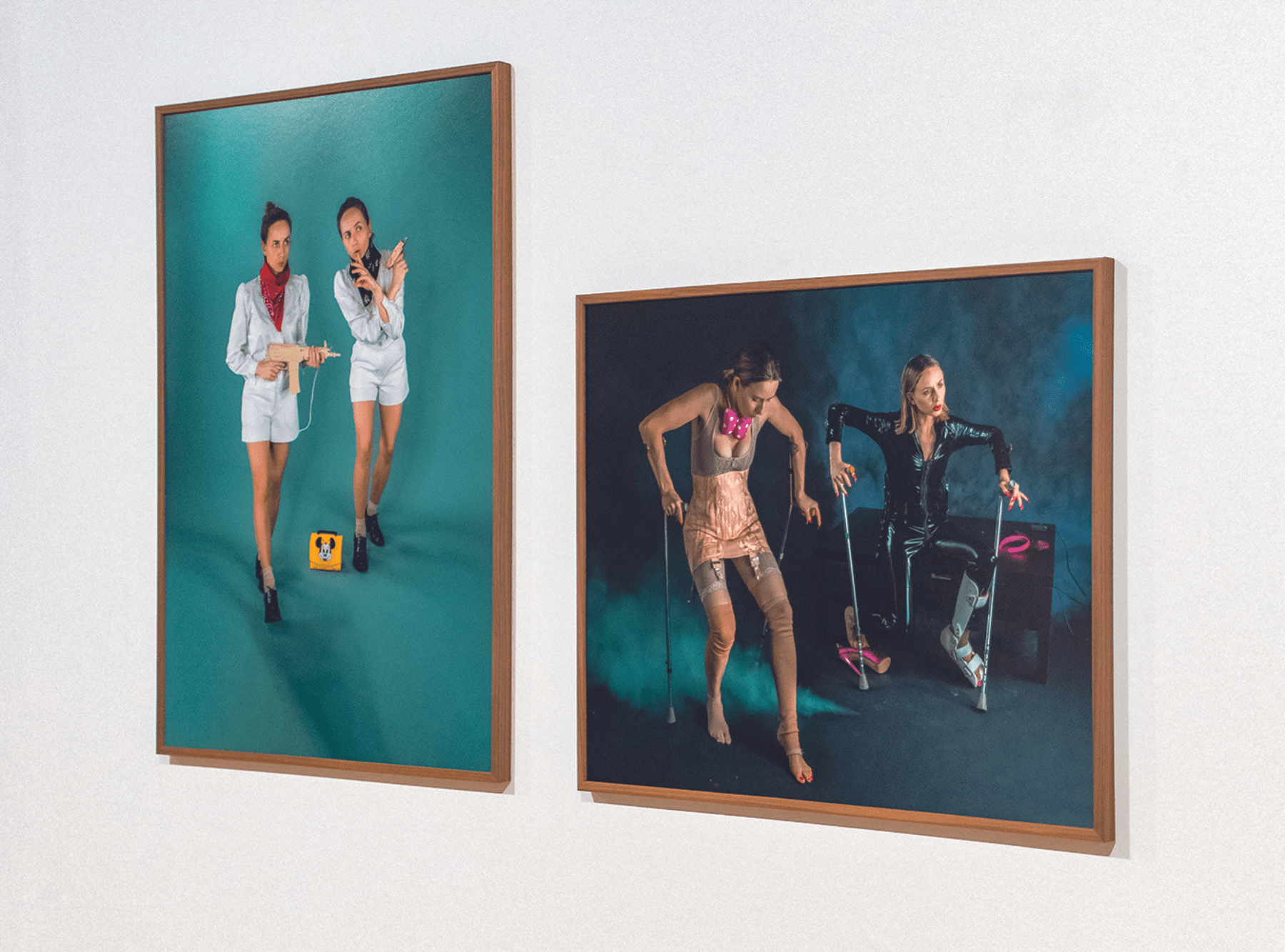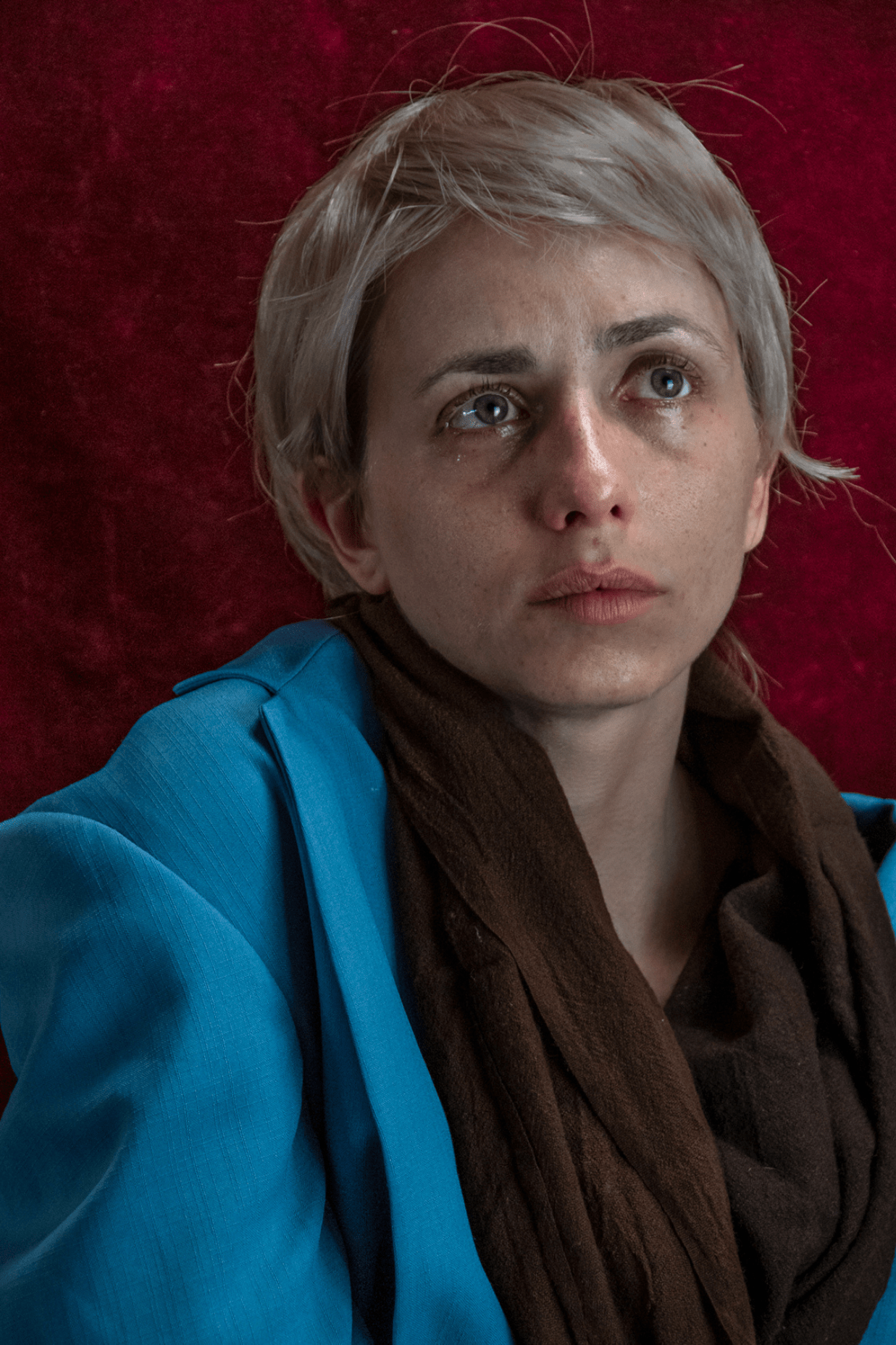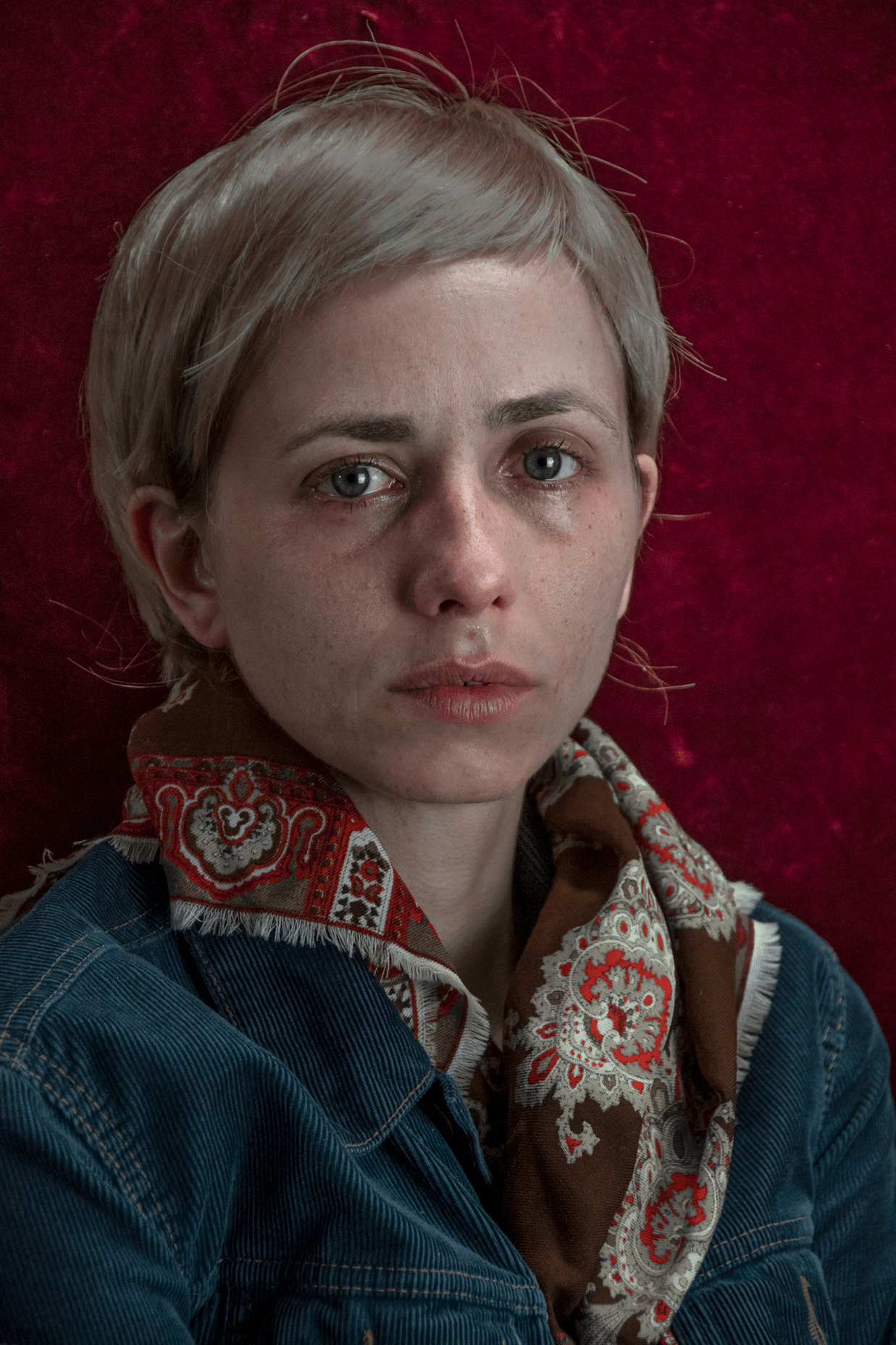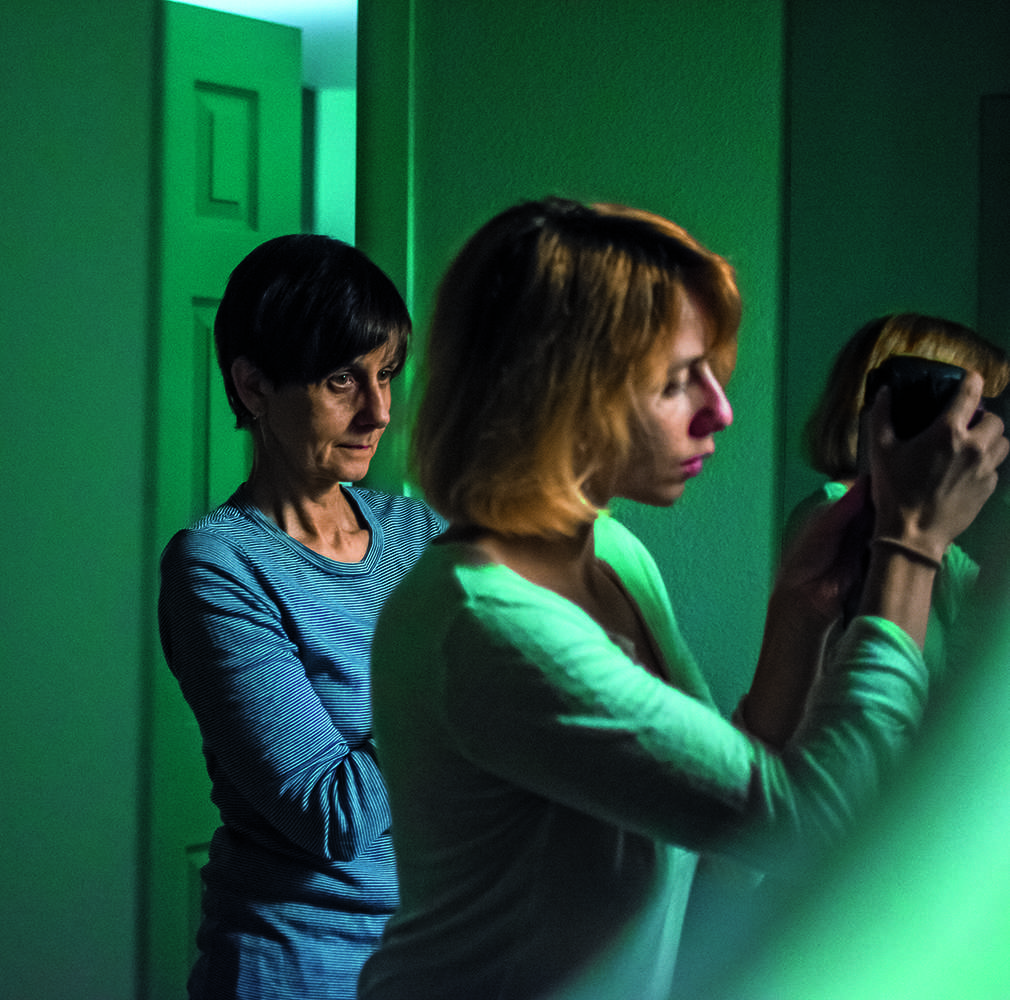
A Belgian artist duo, memymom is the confluence of Marilène Coolens (born in 1953) and Lisa De Boeck (born in 1985), mother and daughter. They founded memymom in 2004. The cross-generational collaboration began with the series of photos entitled The Umbilical Vein (1990–2003), an intimate archive of analogue photos in which Marilène encourages Lisa to express herself and create her own improvised theatre scenes. Over the years, their semi-staged dream portraits, gathered and exhibited in three different photo series, have developed into a mature conversation about metamorphosis, personal identity and the mother-daughter relationship, but their work has also evolved into a plea for sensual analysis and tragic romance.
Marilène and Lisa, you’ve been working together as an artist duo for nearly two decades. How do you feel your work has evolved over the years, and how has it been shaped by your personal mother-daughter relationship?
Marilène: Compared to our beginnings, our collaboration has evolved and our work has become much stronger, grown-up, professional and conscious. This also stems from the fact that we are self-taught and spent a huge amount of time practising and playing around when we started working digitally in 2004 as memymom after The Umbilical Vein (1990–2003). I remember that the dawn of the digital era felt quite magical, in the sense that, suddenly, you could do anything you wanted. Around 2010, Lisa started giving our work some direction. She started defining objectives that fell in line with her vision of memymom. In that sense, both our relationship and working method help our work progress. As far as I’m concerned, it’s easier to work with someone who is younger and in touch with her epoch. In general, I don’t really think about our mother-daughter relationship as being an axiom or genuinely important when we work together.
Lisa: For me, our evolution is perceptible in the artworks we selected for this project: We’ve Seen Things, 2018. It’s an image from our third chapter Somewhere Under the Rainbow (2016– 2021) and is part of a triptych along with the images Many Things and Awful Things. We showed this focal image during our largest retrospective solo exhibition to date, which was held at Brussel’s Le Botanique in 2021, Home Game. I’m struck by the contrast between me playing at being a glamourous grown-up in the nineties. And now, in 2018, the adult me plays a crying kid and other very harsh roles. It is the manifestation of an evolution and reflects the way in which we automatically and intuitively react to the era in which we live. As time goes by, you start feeling the need to tell different stories and convey other feelings and even opinions. This does not necessarily reflect any form of activism, but we have continuously drawn our inspiration and reacted to the world we see around us, and as the world has most definitely changed now, our work has naturally followed suit. It’s very difficult to define exactly how our relationship has shaped our work. We are used to one another and incredibly comfortable together, but most importantly, we are two individuals who get along very well. The mutual trust and our symbiosis play a huge role.
Using a plethora of theatrical and cinema references, your photographs stage stories, symbols, and recognisable patterns of our contemporary world. If we were to imagine a film in which you told the combination of your stories, what would it look like, and which director would you choose?
Marilène: The first names that spring to mind are Paul Thomas Anderson, whose directing is very delicate and elegant, and Jane Campion, who is subcutaneously terribly ferocious. From a purely visual perspective, I would love to work with directors like Leos Carax and Noé Gaspard, who are both very modern in their approach and whose universes are as colourful and peculiar as ours.
Lisa: I’ve given this a lot of thought over the years. At this point, I honestly believe that we would be the only ones capable of telling our stories, since we hold the keys to the many references we use (all the secrets hidden in plain sight) in there. It would take an outsider time to apprehend our world. Our visual approach would be that which we use in our work, and our stories would have the same dubious possibilities. We could very well go in any direction, since ultimately, our images are fluid and change over time, there’s not just one storyline or one movement. I am very curious about one artist and director, Miranda July, who remains profoundly true to her vision. She has a very unique way of seeing the world and apprehending relationships. That and the freedom that seeps into her world are simply admirable
How did the transition from analogue to digital impact your work?
Marilène: I tend to feel somewhat trapped with analogue photography, but there are so many more opportunities and choices with digital photography. The transition proved very smooth, since digital photography offers many more options and endless possibilities. I felt happy switching to something that felt so natural to me. We adapted our way of playing around and we started working differently, perhaps more imaginatively.
Lisa: I have great memories linked to the analogue era, but I never photographed using an analogue camera – that was only Marilène. But I’ve always been fascinated by this process of yesteryear and the way in which you could only take 36 photographs, wait while they were developed before sitting in the car to select our favourite shots before pinning them onto the walls of our house where we would exhibit them before enlarging some. Looking back, there were very intimate moments. There was no social media, we only did what we did for ourselves, for our own pleasure. That sense of enjoyment has changed. Today, everything is so accessible and there is an overkill in the images culture. As a child of the digital age, I started taking photos non-stop with this small digital camera in early 2004. At that time, I would photograph everything, all the time… I was addicted to capturing images. It was extremely simple to upload images directly on a computer, open photoshop and start working and reworking those images. This was hugely important as it meant we could play around even more than before. Marilène sees this process as a sort of painting insofar as you rework images. So, I would not say that analogue photography is restrictive, but rather that it’s about the medium and possibilities that most inspire you. And that you are drawn into. And that’s how digital photography has taken us to where we are now.
How did the forced isolation and countless changes brought about by the pandemic affect your work?
Marilène: Personally, I don’t think the pandemic has changed much our way of thinking. However, the environment and the outside world have undergone a drastic change insofar as you no longer engage with people as you did before. Human contacts have become more complicated… and as we also work with other people, it becomes even more interesting. During the pandemic, we were forced to work together all the time. We did exactly what we needed to do, which is a virtue in itself. We made images using the ideas we had before the pandemic hit in 2020. We had time on our hands and were broaching issues which have become increasingly problematic in the past two years. The boldness that permeates these images is greater because we were isolated. And that’s what kept us going. In moments like these, you need discipline and character. However, we also felt a form of emptiness when we stopped to think about “why” we should still carry on doing our thing. Was it “useful”? After a while, your thoughts submerge you. Let’s not forget that humans are social creatures. If you are isolated for too long, you break…
Lisa: It’s been intense, but this change was a long time coming. You could say it was almost overdue, as we embarked on our chapter Somewhere Under the Rainbow in 2016. This chapter reflects on the times that are a-changin’. This is when the terror attacks struck Paris and Brussels. The mood was dark, gloomy and heavy. I remember standing by the window, thinking of the rainbow sculpture nearby the Belgica subway station here in Brussels… That’s when it hit me, we are under the rainbow. We felt this coming, so it comes to no surprise. It’s just one more event, another surprise that confirms the profound change in the times. But during the past two years, we’ve moved into a new stage at staggering speed. Today, this is where we are, in the midst of a Neo-liberal age, where’s there’s less room and you have to think inside the box you’ve been allocated. We did a handful of shoots during the lockdown. We had gathered many ideas and trunks filled with clothes and costumes over the years, and so we did what we always do, but the world came differently to us this time, as a reaction to what was happening outside. These experiences have left a strong mark on our work, although our projects were already ahead of their time and reacting to what was taking place all around the globe. These past years have struck us hard on an emotional level. We found that the crying kid from the image We’ve Seen Things, where the tears silently run down our faces as we stand powerless watching the world crumble around us, best represents this feeling.
PHOTO CREDITS
© memymom | Lisa De Boeck & Marilène Coolens






















